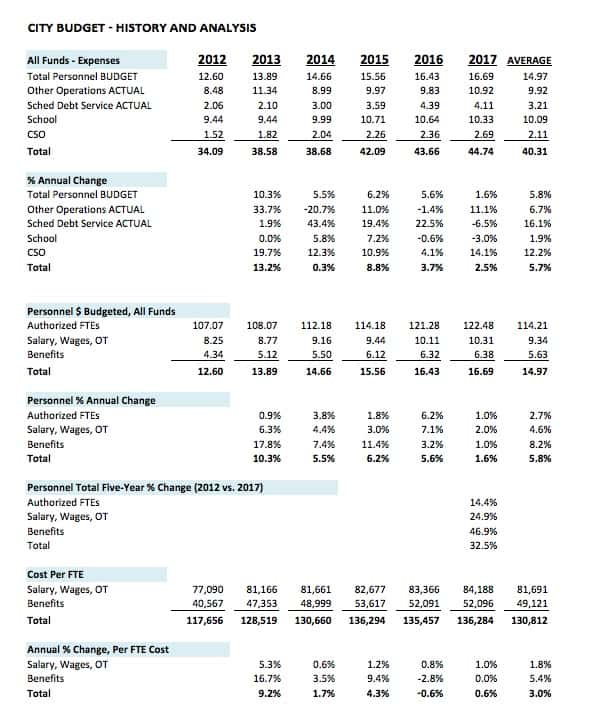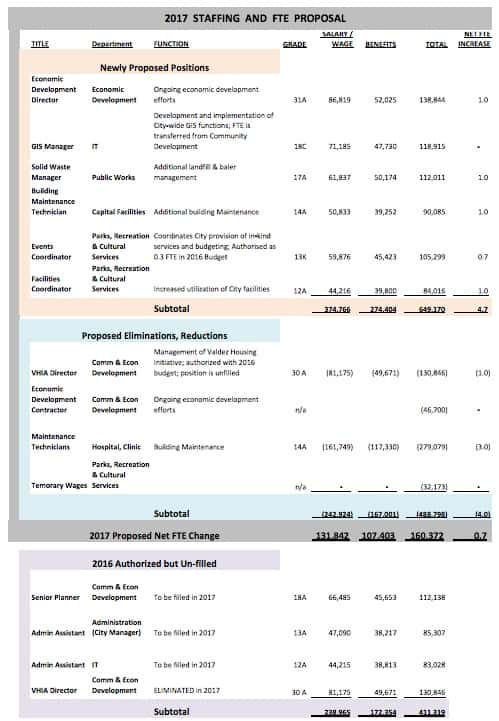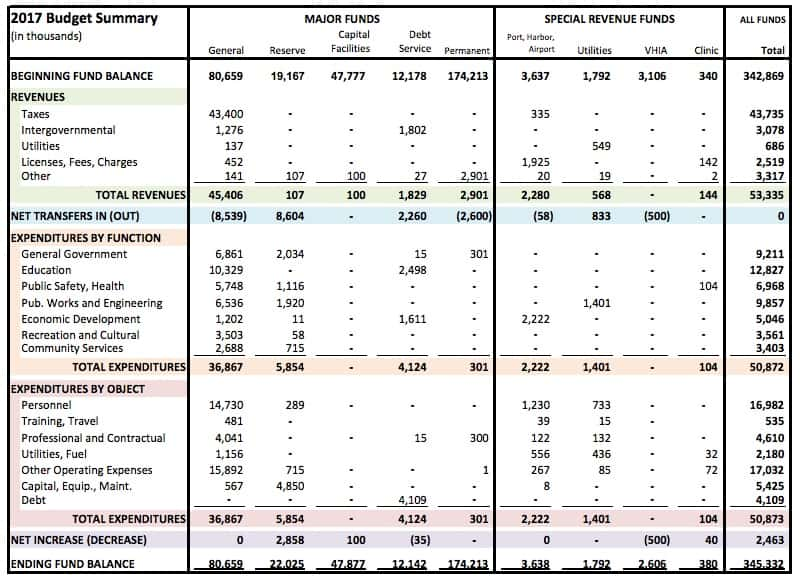Episodes
Budget Session Discussion with Valdez City Manager
- November 2, 2016 9:57 pm|
KVAK discusses the budget sessions with Valdez City Manager, Dennis Ragsdale. (11/1/16)

VHS VOLLEYBALL REGIONS
- October 31, 2016 7:39 pm|

Over the weekend the Valdez High School took time to recognize the senior volleyball players during their last conference games against the Galena Hawks. This year the volleyball team recognized two seniors for their outstanding high school careers; Hali Baczuk and Jane Sharrai. This weekend the volleyball team will be traveling to the region tournament hosted by the Monroe Catholic Rams in Fairbanks. Monroe will be hosting six teams: Valdez; Delta; Monroe; Eielson; Galena; and Hutchison. The Lady Bucs will travel to Fairbanks Thursday and the tournament is scheduled to take place on Friday and Saturday. Coach Langseth said “movement and communication” will be the key for Valdez going into the weekend. The Lady Bucs will be going into the tournament as the number 1 seed having never lost a game in conference play. Their only losses for the season have come at the hands of 4A schools.
SWIMMERS FINISH STRONG AT REGIONS
- October 31, 2016 7:35 pm|
The Valdez Swim team went to the Region III Swim and Dive championships last weekend. “Our swimmers performed very well this weekend,” said coach Overduyn. “I was very pleased by their performance and the way they carried themselves.” The goal in regions is to swim fast enough to qualify for state, regions is the only chance they have. Our team did just that. They swam fast. Grace Keller Swam a 1:06.97 from a 1:10.33 putting her in a qualifying position, in her 200 IM she went from a 2:42.99 to a 2:31.93 an 11 second improvement. Rylee Norris went from a 26.88 to a 26.83 in the 50 Free and a 1:01.48 in the 100 Free to a 59.83. Chris Cummins went from a 2:26.59 in the 200 IM to a 2:21.76 having a great swim. Rowan Miller had two great swims. In the 100 Butterfly she went from 1:17.79 to a 1:11.99 and in the 100 back from a 1:13.34 to a 1:10.33. Victoria Korenev went from a 1:12.91 in the 100 free to a 1:11.32 having another great swim. Angela Alfaro went from a 37.72 to a 36.74 in the 50 free and in the 100 back from a 1:41.14 to a 1:39.29. All the kids did great including our two girls relays, our 200 medley relay went from 2:14.54, to a great 2:09.63. Our girls 200 free relay went from a 1:59.80 to a 1:54.73 where all four members set some sort of personal best.
Story courtesy of Athletic Director Lea Cockerham
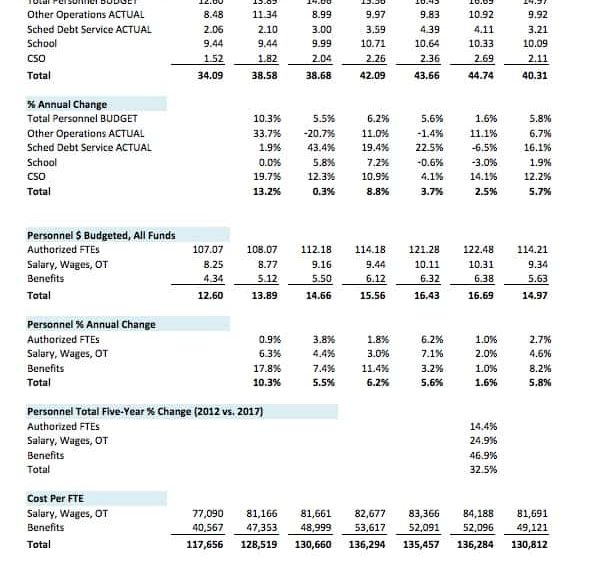
City Budget Work Sessions Continue
- October 31, 2016 7:35 pm|
Detailed City Budget History and Analysis
Summary of Staffing Requested for 2017 Budget
2017 Budget Summary
New Law Raises Alaska Fishing- and Hunting-Related Fees Beginning in 2017
- October 31, 2016 5:57 pm|
PRESS RELEASE
(Juneau) – Fees for Alaska sport fishing, hunting, and trapping licenses and tags will increase beginning January 1, 2017. The Alaska State Legislature raised the fees last session through the passage of House Bill 137, which received broad support from user groups. The new rates mark the first time in 24 years that hunting license and tag fees have increased, while sport fishing licenses last increased about 10 years ago.
“Alaska’s new prices are in line with other states,” said Commissioner Sam Cotten, and in fact, “are significantly less expensive for resident hunters because Alaskans don’t pay resident hunting tag fees.”
Changes under the new law are not limited to fee increases. Alaska residents under the age of 18 will not be required to purchase hunting or fishing licenses or state waterfowl or king salmon stamps. The requirements for nonresident anglers over the age of 16 remain unchanged, and those individuals must purchase fishing licenses and stamps.
Nonresident hunters and trappers of all ages must purchase appropriate licenses, tags, and stamps. Licenses for 2017 are available online, at 2016 rates, through the end of the year at www.adfg.alaska.gov/index.cfm?adfg=license.main. For a full list of prices beginning January 1, 2017, please visit http://www.adfg.alaska.gov/static/home/pdfs/2016_2017_alaska_license_fees.pdf
Revenue from license, stamp, and tag fees for sport fishing, hunting, and trapping are used to directly fund state fish and wildlife management and conservation. The fee increases will enable the state to leverage tens of millions of Pittman-Robertson and Dingell-Johnson federal aid dollars, which provide core management and conservation funding.
The license fee increase was supported by conservation and sportsmen’s groups as well as the guiding industry, including the Territorial Sportsmen, Safari Club International, Kenai River Sportfishing Association, Alaska Professional Hunters Association and the Alaska Outdoor Council.
For more information, contact Maria Gladziszewski at (907) 465-4114, maria.gladziszewski@alaska.gov; or Lisa Evans at (907) 267-2330, lisa.evans@alaska.gov.
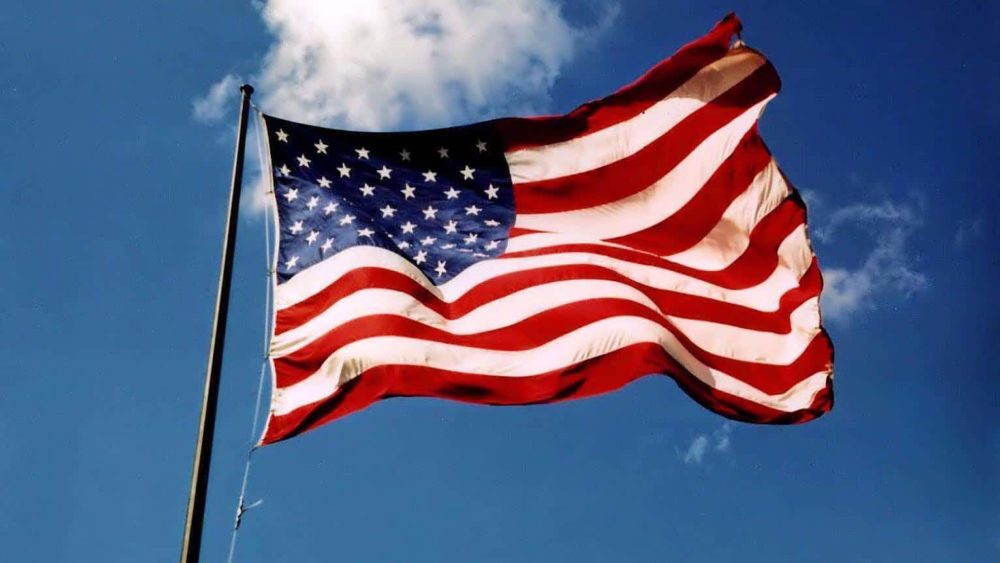
HHES to Honor Local Veterans
- October 31, 2016 5:54 pm|
Hermon Hutchens Elementary School will celebrate Veterans Appreciation Day on Thursday, November 10th.
Please join us as we honor our local veterans and learn more about the five branches of the US military.
Our ceremony and presentations will begin promptly at 1:45 p.m. in the HHES gymnasium.
Parents and local veterans are invited to attend.
They’re Still Awake: Be Bear Aware
- October 31, 2016 5:36 pm|
PRESS RELEASE
(SOLDOTNA) – Recent incidents involving bears in Seward – where a dog walker was mauled Thursday and a brown bear sow and two cubs were shot last week by homeowners in a local subdivision – are serving as a wake-up call to many in Southcentral Alaska who believe bears have gone to sleep for the winter.
“Bears may be active any month of the year,” says Kenai Area Wildlife Biologist Jeff Selinger, “especially if they have access to food.”
Ongoing reports of bears drawn to Seward-area subdivisions by unsecured trash, pet foods, and poultry led to citations for some homeowners, but not before bears became habituated to attractants. This created a dangerous situation for people and bears alike.
Seward is not alone. Relatively mild weather in Southcentral Alaska so far this winter, combined with the availability human-supplied foods, has led to human-bear conflicts from Homer to Eagle River and many points in between, including Anchorage.
Minimizing attractants reduces the likelihood of potentially dangerous interactions, loss of personal property, and the unnecessary destruction of bears. To prevent attracting bears, residents should postpone putting out bird feeders until colder weather arrives and bear presence tapers. Storing pet and livestock foods, trash and other bear attractants in a garage, sturdy shed or in bear-resistant containers further reduces unwanted bear visits. Owners of chickens, goats and other small livestock should erect electric fences to discourage raids by bears. For more information on electric fences, contact your area department office or visit the department webpage at http://www.adfg.alaska.gov/index.cfm?adfg=livingwithbears.bearfences.
Brown bears can be particularly defensive of food sources, creating hazards in populated areas. Incidents of bears frequenting neighborhoods or other populated areas, getting into trash, showing aggression, or related concerns should be reported to the nearest Department of Fish and Game office during regular business hours. If the situation involves an immediate public safety concern, contact the Alaska State Troopers or local law enforcement.
“So many situations go unreported, or we hear rumors days later via social media,” says Anchorage Area Wildlife Biologist Dave Battle. “We want to know any time brown bears are seen in town or populated areas, and people should let us know whenever they see bears in trash or feeding on human provided food.”
Bears can be encountered anywhere. Hikers, runners, dog walkers, hunters and anglers should travel in groups, make plenty of noise, avoid known or likely bear areas after dark, and carry pepper spray or an appropriate firearm for defense. For more information about coexisting with bears, visit www.alaskabears.alaska.gov.
Alaska Department of Fish and Game
CONTACT: Ken Marsh Public Information Officer (907) 267-2892





